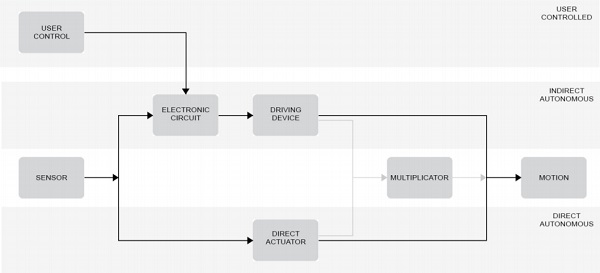Post Time:Dec 31,2020Classify:Industry NewsView:2194
Adaptive Components
The Adaptivity (lat. adaptare: adapt, adjust) is the reaction to environmental boundary conditions and may be applied to the field of thin glass applications. Both, reactions and boundary conditions are diverse. Facades commonly have to meet requirements concerning structural safety, air tightness, visibility, lighting, temperature and precipitation. Reactions may be changes in transparency, light guiding, ventilation and others. In the following, movement of thin glass edges and thin glass elements are considered as application for thin glass façades provided in this paper. The autonomous ones could be either directly driven from an autonomous actuator by transforming the physical shape change of the actuator to a movement or indirectly driven by an electronic circuit that translates a measured sensor input to an individual drive device or to a number of synchronized devices. Changes in the geometry require for a motionsequence derived from measured information. In the case of autonomously moved elements, a direct actuation by physical effects may be scaled up to the actual movement my simple mechanical multiplier units such as scissor or lever elements. Electric energy as well as physical impulses such as temperature, air humidity, light or pressure can be used as triggers for the flow of information. Concerning adaptivity, a promising type concerning robustness and sustainability are direct autonomous systems, which function independently of energy supply. In figure 02 individual components of adaptive systems are shown. As mentioned in figure 02 above, the components are combined to build adaptive systems. The components that are required for adaptivity are specified in the following subchapters. Environmental surroundings such as temperature, air humidity, solar radiation can be quantified with sensors such as thermometers, hygrometers or pyranometers, and these surroundings can be converted into electrical impulses. Those impulses conduce the system controlling to generate the operating signals for actuator movements. The incoming signals from sensors initiate movement by actuators. The function of the latter is to power a system or mechanism. Actuators can be separated into two groups, autonomous and controlled actuators. Intelligent materials take on the task of the sensors to control themselves without the use of control technology. Adaptive functional materials can be divided into two groups: semi- smart materials are able to adopt changes on a few occasions. Smart materials have permanent reversible characteristics, which can be triggered by physical influences such as temperature, light, pressure, electrical impulses, magnetic impulses or chemical impulses. [1] The greatest advantage of autonomous powering systems is a permanent workflow and no dependence on, for example, energy. Various forms of autonomous actuators are shown in the following chapter entitled “Adaptive Systems”. The transferred command from sensor technology is part of the process cycle and initiates the actuator, as shown in figure 3. With controlled systems, process engineering is relevant, for example, electric energy is converted as a signal through electrical linear actuators into a linear motion. 
Sensor technology
Actuators
Autonomous actuators
Controlled actuators
![Figure 3 Electric linear actuator [2]](https://www.glassonweb.com/sites/default/files/inline-images/Fig3_24.jpg)
Source: Author: shangyi
PrevThe market scale of Chinas glass industry exceeds 100 billion
Asahi India Glass rating: Buy; new import duties to help the companyNext